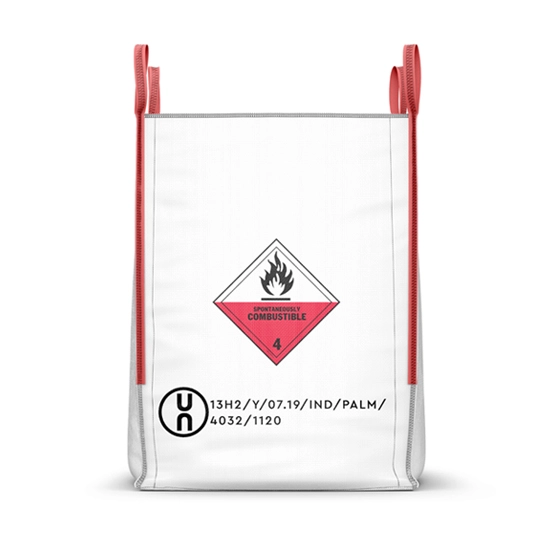OSHA Secondary Containment Requirements for Chemical Storage
Hazardous substances pose a significant threat in the workplace, which is why OSHA’s secondary containment requirements are so critical.
These regulations are in place to protect employees, the environment, and your business from the potential dangers of uncontrolled releases.
But what exactly are secondary containment requirements and why are they so important?
And how can Palmetto Industries help with a solution?
Join us as we dive into the world of OSHA regulations and discover the key components of effective secondary containment. From ensuring compliance to preventing harm, these requirements are essential for a safe and responsible workplace.
What is secondary containment for chemicals?
Secondary containment is a safety measure designed to prevent the spread of hazardous chemicals in case of a primary container failure, such as a spill or leak. It involves the use of additional containment systems, such as double-walled containers, spill trays, or dikes, to capture and control any hazardous chemical release.
In essence, it’s a seriously important factor for safe chemical storage, helping to minimize the risk of exposure to hazardous chemicals and potential environmental damage.
With this in mind, it’s imperative that you have safe chemical storage solutions in place.
An ideal solution is our UN bag, which is UN-approved and can safely contain chemical and hazardous waste prior to and during transportation and recycling.
While it’s one thing to know what containment is in terms of chemical storage, let’s delve a bit deeper to understand exactly WHY they exist…
Why are the OSHA secondary containment requirements for chemicals in place?
OSHA’s secondary containment requirements for chemicals are in place to help prevent potential harm to employees and the environment in case of a hazardous chemical spill or leak.
They’re part of the overall OSHA chemical storage regulations, which aim to ensure the safe handling and storage of hazardous chemicals in the workplace.
In hazardous chemical storage, the risk of chemical spills or leaks poses both an environmental threat and one to your employees.
Employers must ensure that they comply with the relevant OSHA regulations and guidelines to ensure that their hazardous chemical storage practices are safe and in compliance with industry standards.
This is important to us since we ensure our UN bags are capable of containing the hazardous chemicals which OSHA’s regulations oversee.
Key chemical storage guidelines OSHA provides
OSHA’s containment rules specify the guidelines for the storage of hazardous chemicals in the workplace through the following standards:
- Hazard Communication Standard (HCS)
- Hazardous Waste Operations and Emergency Response (HAZWOPER).
The following are some of the key chemical storage room requirements provided by OSHA:
- Proper labeling and identification of hazardous chemicals.
- Segregation of incompatible chemicals to prevent reactions that could cause fire or explosion.
- Adequate storage of hazardous chemicals in appropriate containers, such as safety cans, flammable liquid storage cabinets, or chemical storage buildings.
- Ventilation to prevent the build-up of hazardous fumes.
- Proper fire protection, including the use of fire extinguishers and fire suppression systems.
- Spill control measures, including secondary containment for larger quantities of hazardous chemicals.
- Regular inspection and maintenance of storage areas, containers, and equipment.
- Sufficient training of employees on the safe handling and storage of hazardous chemicals stored in your facility.
It is important to note that these guidelines are general and may vary based on the specific chemicals and storage conditions in the workplace.
Employers should consult the relevant regulations and guidelines to ensure they comply with the specific requirements for their industry and workplace.
Who needs to follow the hazardous materials storage regulations?
The hazardous materials storage regulations, including those for chemical secondary containment, apply to employers who handle and store hazardous chemicals in the workplace.
This includes a wide range of industries, including:
- Manufacturing
- Construction
- Transportation (see our guide on transporting hazardous materials for more on this)
- Healthcare
- Agriculture
Failure to comply with these regulations can result in significant penalties and legal liability.
Planning to meet OSHA spill containment requirements
A business can plan to meet OSHA’s secondary spill containment requirements by following these steps:
1. Reviewing the spill containment regulations
The business should familiarize itself with the relevant OSHA regulations mentioned above, namely; the Hazard Communication Standard (HCS) and the Hazardous Waste Operations and Emergency Response (HAZWOPER) standard
Doing this is an essential start in ensuring you understand the specific requirements for secondary spill containment and chemical storage requirements.
2. Assessing the hazards
Once you’ve reviewed the regulations, best practice is to evaluate the specific chemicals being stored and the potential consequences of a spill or leak.
This step means you’re taking the regulations and applying them to your business situation. With this in mind, a risk evaluation here will differ from your business to your competitors but also between different industries.
3. Implementing appropriate measures
Based on the hazard assessment in step 2 above, the business can implement appropriate secondary containment measures, such as:
- UN bags
- Double-walled containers
- Spill trays
- Sikes
Interested in how our UN bags could help you here? Get in touch below…
4. Regularly inspecting and maintaining the containment measures
Regularly inspecting and maintaining your secondary containment measures ensures they remain in good condition and can effectively contain a spill or leak.
Consider building this into your preventative maintenance policy and other SOPs.
5. Training employees
Employees should be trained on the safe handling and storage of hazardous chemicals, including the proper use of secondary containment measures.
Common training practice here can form any combination of the following:
- Training as part of an employee’s induction
- Annual external training as part of an employee’s CPD
- Independent audits and training from a consulting firm
By following the above 5 steps, you’re taking the necessary requirements to meet OSHA’s secondary spill containment requirements and ensure the safe storage of hazardous chemicals in the workplace.
Palmetto can help with your secondary containment system needs
You can, and should, protect the environment and safeguard your business and employees with the very best in hazardous waste secondary containment systems.
This is entirely possible in conjunction with our UN-approved bulk bags.
Our solutions are designed to prevent the accidental release of harmful materials, ensuring compliance with regulations and reducing the risk of costly cleanup and liability.
Whether you’re storing chemicals, hazardous waste or fuel, our bags are the ideal choice for keeping your operation running smoothly.
With a focus on quality, reliability, and affordability, Palmetto Industries is the ideal partner for businesses seeking to comply with OSHA regulations for the safe storage of hazardous chemicals.
Final thoughts on hazardous material storage regulations
The EPA and OSHA secondary containment requirements serve as vital measures to ensure the safe storage and handling of hazardous substances.
These regulations ensure that businesses and organizations are maximizing health and safety levels, taking the necessary precautions to prevent spills and leaks from impacting the environment and endangering human health.
By strictly adhering to these federal regulations, businesses can protect their employees, communities, and the environment, and avoid costly penalties for non-compliance.
Investing in safety and health via proper secondary containment systems is not only a legal obligation but also a responsible and sustainable business practice.
FAQs
How many gallons of standard chemical waste may be stored?
OSHA does not specify a specific limit for the amount of standard chemical waste that may be stored. The regulations for the storage of hazardous chemicals are outlined in 29 CFR 1910.106, which sets the general requirements for the storage, handling, and use of hazardous chemicals.
It is the responsibility of the employer to ensure that their storage and handling practices are in compliance with the relevant regulations and that they take necessary measures to prevent fires, explosions, and other hazardous incidents from occurring.
When is secondary containment required?
Secondary containment is required by OSHA when there is a possibility of a hazardous chemical spill or leak that could pose a threat to the environment or employees. Secondary containment is typically used to contain and control the spread of hazardous chemicals, in case of a primary container failure.
According to OSHA regulations, secondary containment is required when the primary container holding hazardous chemicals has the potential to release its contents into the environment, such as through a leak or spill. In these cases, secondary containment measures, such as a drip pan, curbing, or a double-walled container, must be in place to prevent the release of the hazardous chemical.
It is important to note that the specific requirements for secondary containment may vary depending on the type and quantity of hazardous chemicals being stored, as well as the specific industry and workplace. Employers should consult relevant regulations and guidelines to ensure compliance with secondary containment requirements.
Resources & info on OSHA chemical storage requirements
Check out the information in the OSHA chemical storage requirements PDF for further assistance and guidance.









